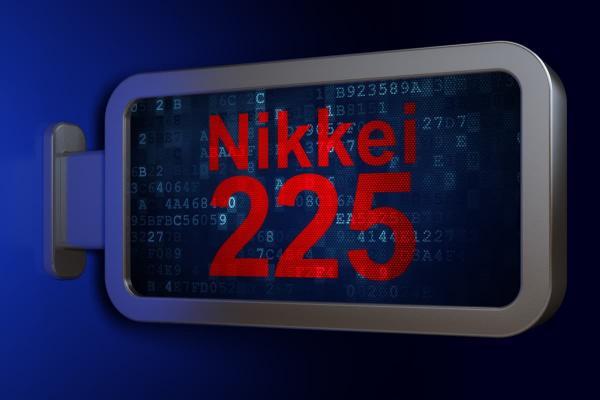

Everything About the Nikkei 225, Japan's Leading Stock Market Index
Nikkei Definition
The Nikkei 225 is Japan's most important stock index. It reflects business activity in the country and contains 225 stocks from different companies traded on the Japanese Stock Exchange. The index itself displays the average arithmetic value of these stocks. It was introduced on 7 September 1950, which was the first time its value was published. The index was named after the newspaper that calculated it.
There are different variations of the index: Nikkei 500, Nikkei Stock Index 300 and Nikkei All Stock Index. They all display somewhat similar information, but the Nikkei 225 is still considered the leading, most widely used indicator.
The selection criteria are based on the price of a company's stock rather than market capitalisation, like with some other indices. Only the largest ones make it to the list of constituents. The higher-priced stocks have the largest influence on the index.
Understanding the Meaning of the Nikkei

The Nikkei 225 consists of stocks selected from top-performing blue-chip companies based in Japan. The main criteria for being selected are the price of the stock, liquidity and sector balance. The stock must also be listed in the Tokyo Stock Exchange First Section.
The composition of the Nikkei 225 is subject to an annual reexamination, known as a Periodic Review. It takes place in October when every company is checked to determine whether it fits the criteria. The process of changing the list of constituents is called an Extraordinary Replacement.
|
Name |
Industry |
Weight (%) |
|
Fast Retailing Co., Ltd. |
Retail |
10.45 |
|
Softbank Group Corp. |
Communications |
4.26 |
|
Tokyo Electron Ltd. |
Electric Machinery |
3.46 |
|
Fanuc Corp. |
Electric Machinery |
3.37 |
|
KDDI Corp. |
Communications |
2.80 |
|
Daikin Industries, Ltd. |
Machinery |
2.33 |
|
Terumo Corp |
Precision Instruments |
2.24 |
|
Kyocera Corp. |
Electric Machinery |
2.22 |
|
Shin-Etsu Chemical Co., Ltd. |
Chemicals |
1.92 |
|
FamilyMart Co., Ltd. |
Retail |
1.71 |
It's calculated based on the value of the 225 most-liquid stocks of the Tokyo Stock Exchange. The formula was developed by the American company Dow Jones & Co., which differs from its European counterparts.
Factors Influencing the Nikkei 225 Index Price
It's commonly known that Nikkei 225 is extremely sensitive to both local and world news and events. Traders who work with the Nikkei index should closely monitor the following:
- Japan's macroeconomic indicators: inflation, deflation, unemployment rate, the number of new jobs, etc.
- The financial health of individual companies included in the index
- The overall situation in foreign stock markets, but especially movement in the US market. If the Dow Jones index rises, Nikkei will react similarly
- World events, natural disasters, wars, political instability and economic news
The close connection between the Japanese and American markets, particularly their main indices, is attributed to Japan's exports to the US. Therefore, you should keep an eye on the dynamics of the S&P 500 and the Dollar Index, as well as other US indicators.
Advantages and Disadvantages of the Nikkei 225
The Nikkei 225 has specific differences that make it stand out from indices like the FTSE or DAX. When contemplating whether you should invest in this instrument, keep in mind the following benefits:
- The simplicity of a price-weighted index
- Ease of tracking the overall health of the economy
- Fixed spread
- Long trading hours
- Less risk than capitalisation-weighted indices
There's no financial instrument that is flawless or carries zero risks. In this context, here are some considerations regarding the Nikkei index:
- Significant effect of small firm stock changes
- No attention to the size of the industry sector
- Vulnerability to sudden drops in the bear market
What is Nikkei 225 CFD Trading?
The Nikkei 225 remains the most widely quoted average in Japan because of good trading opportunities. However, the Nikkei index isn't directly tradeable. Instead, there's a convenient option to trade this index using CFDs (contracts for difference).
What is CFD Trading?

CFD trading is based on price differences rather than acquiring the asset. The main goal is to gain speculative profits from the differences in underlying assets' prices. CFDs are way to invest in the securities market in either direction. Depending on what behaviour you expect from the market, you'll be able to adjust your strategy accordingly.
Advantages and Disadvantages of CFD Nikkei 225
Those familiar with CFDs may recognise the many positive aspects of this instrument. It can be more profitable and convenient than trading the underlying asset itself in many cases. Benefits include the potential to:
- Significantly increase initial capital with leverage
- Work with both rising and falling markets
- Trade international markets from one account
- Hedge an existing shares portfolio
- Work flexibly with timeframes and contract sizes
Newer traders who want to try trading CFDs should remember that such trading still has certain risks, such as:
- Losses associated with excessively large leverage
- Over-trading because of low capital requirements
- No rights as a shareholder
FTSE Nikkei 225 Trading Strategies
The Nikkei 225 has gained popularity among CFD traders due to its good volume and volatility. The index has earned a reputation of being the most volatile index due to sharp fluctuations in prices. Analysts recommend that trading the Nikkei index should be done by experienced and active traders. At the very least, you should be prepared for different outcomes.
The index is usually growth-oriented. Sharp drops in value only occur during massive crises, that is, every 5 to 10 years. Once a year, you can expect it to sink by 10-15%. When trading in a bearish market, stay cautious and always set up a stop-loss. When the market is going up, stick to a bullish strategy. Setting a stop-loss is less crucial but still advisable.
Conclusion
The Nikkei 225 index is a leading stock price index in Japan. If you're looking for an investment instrument to diversify your risks, the Nikkei 225 may be a suitable choice. The Japanese economy is still on the rise, which directly affects the index's performance.
With all this information in mind, it's time to use it to your advantage. Sign up for a free demo account on Libertex and try out your skills in trading any financial instrument in a simulated live market environment. You can familiarise yourself with the technical aspect of Libertex's platforms and learn valuable trading skills.
Disclaimer: The information in this article is not intended to be and does not constitute investment advice or any other form of advice or recommendation of any sort offered or endorsed by Libertex. Past performance does not guarantee future results.
Why trade with Libertex?
- Get access to a free demo account free of charge.
- Enjoy technical support from an operator 5 days a week, from 9 a.m. to 9 p.m. (Central European Standard Time).
- Use a multiplier of up to 1:30 (for retail clients).
- Operate on a platform for any device: Libertex and MetaTrader.